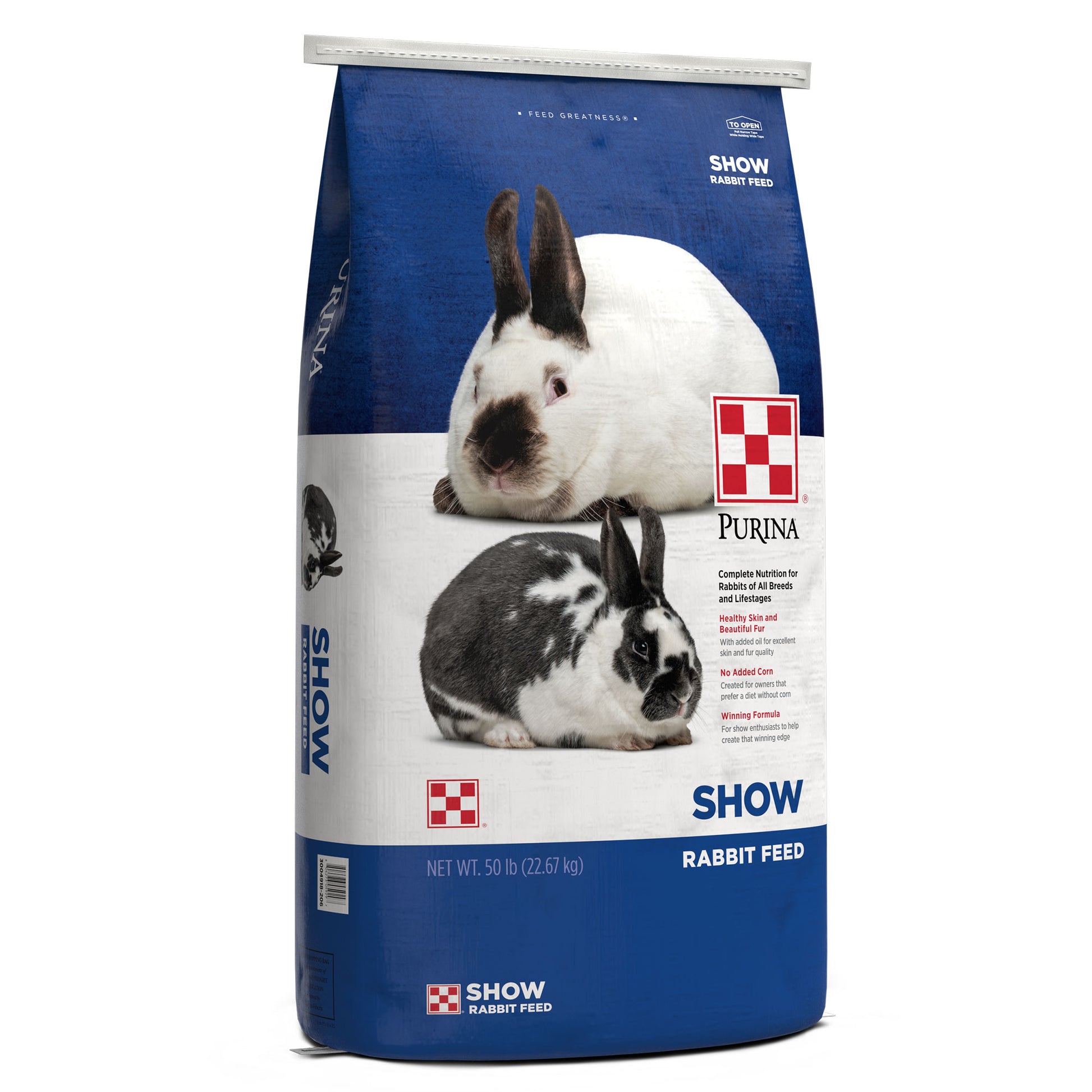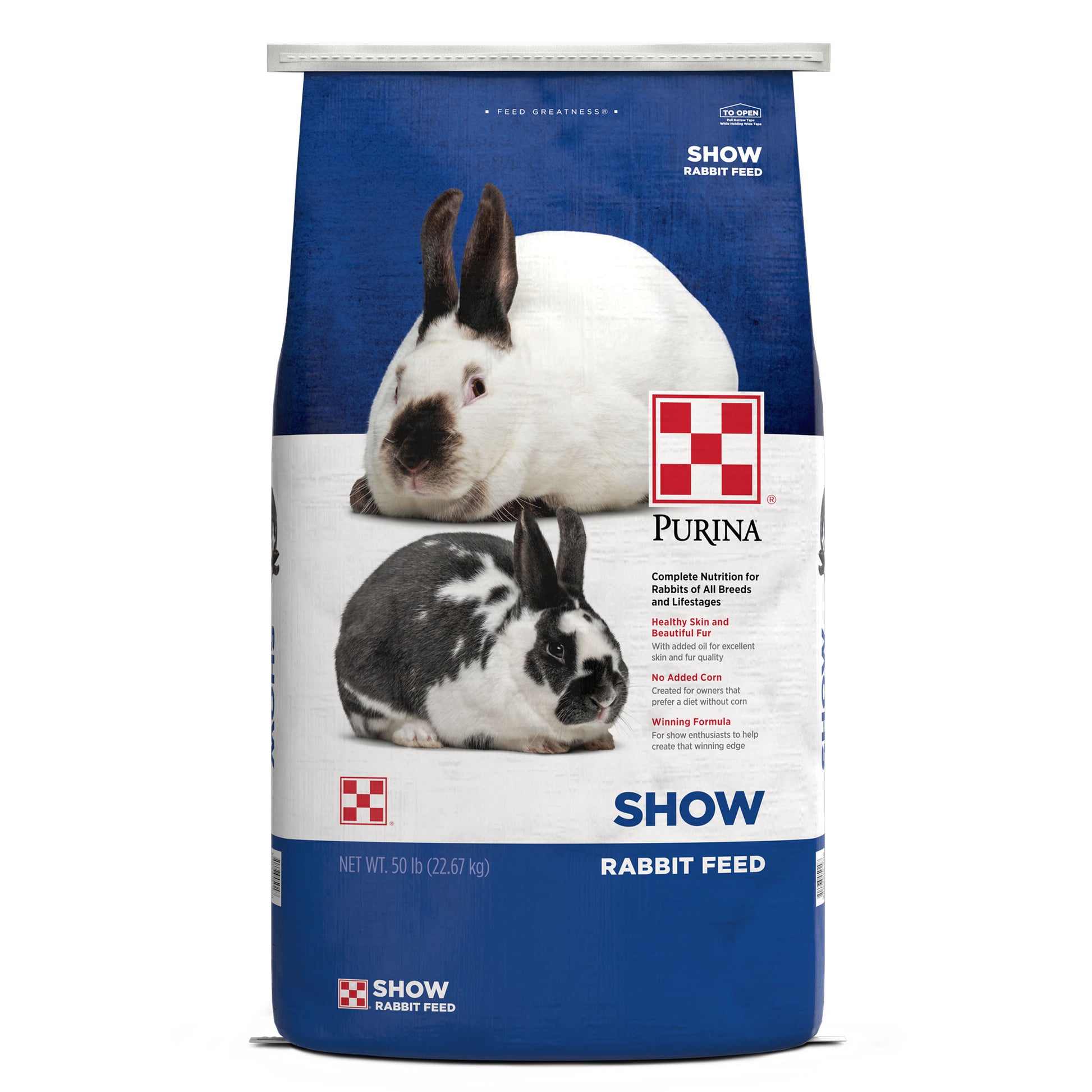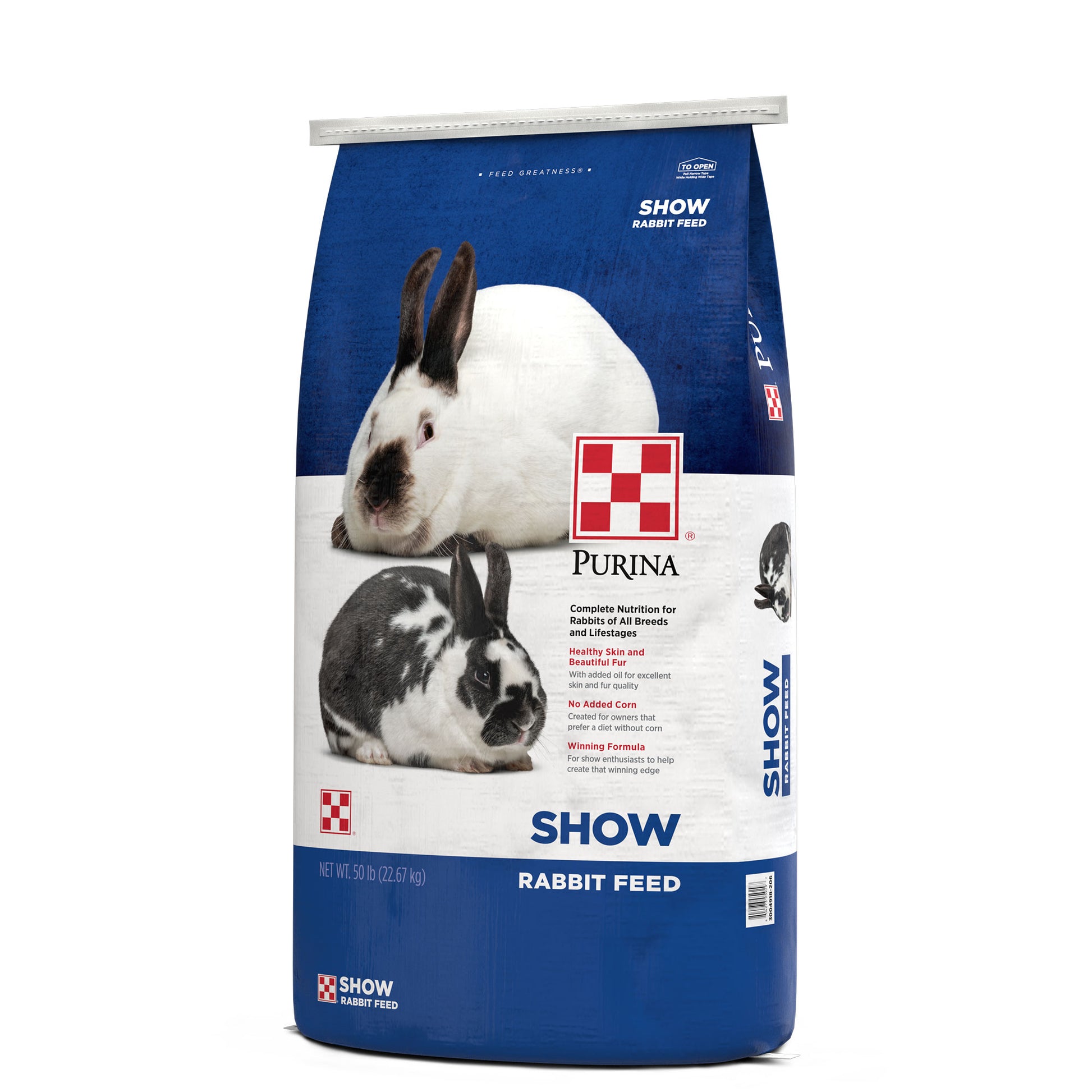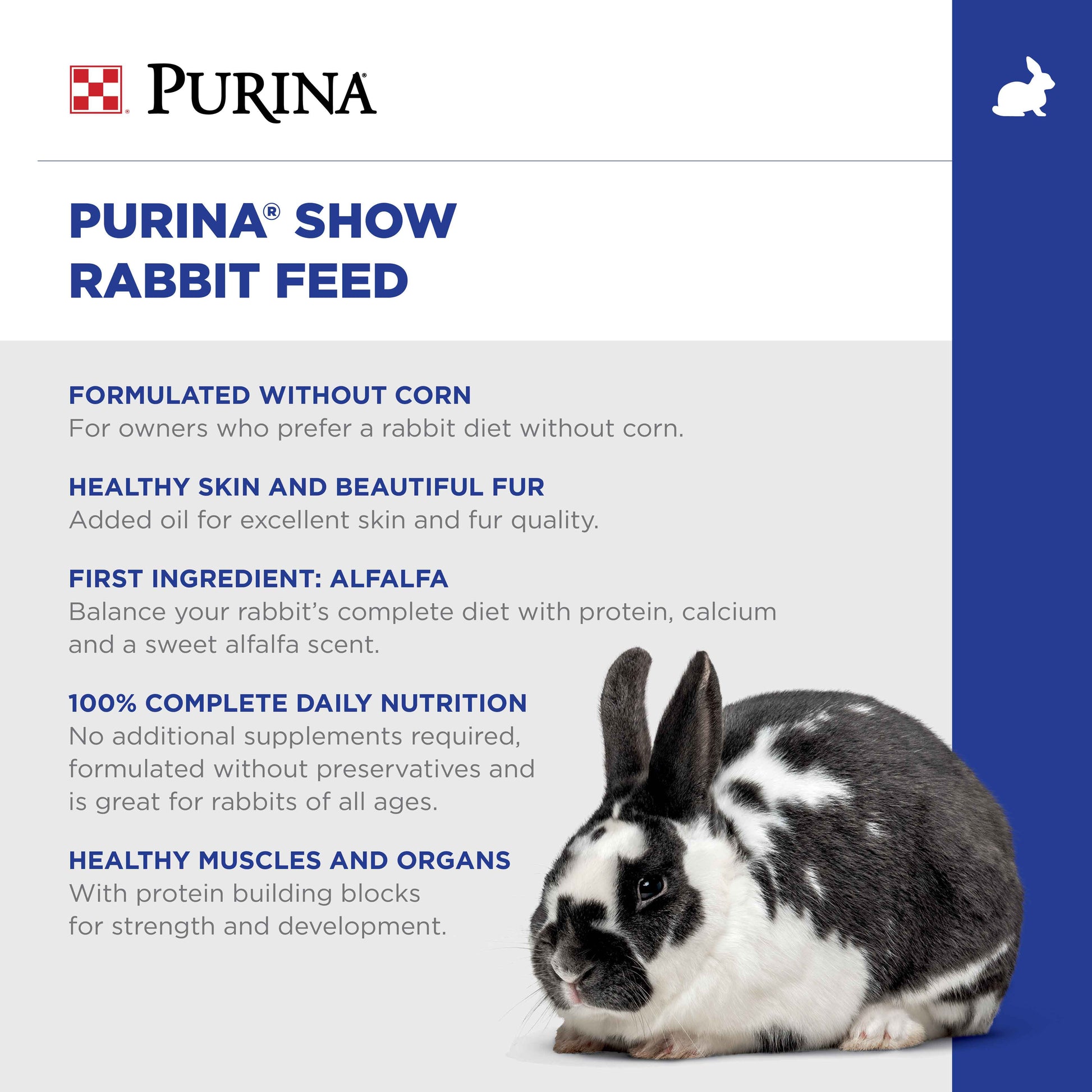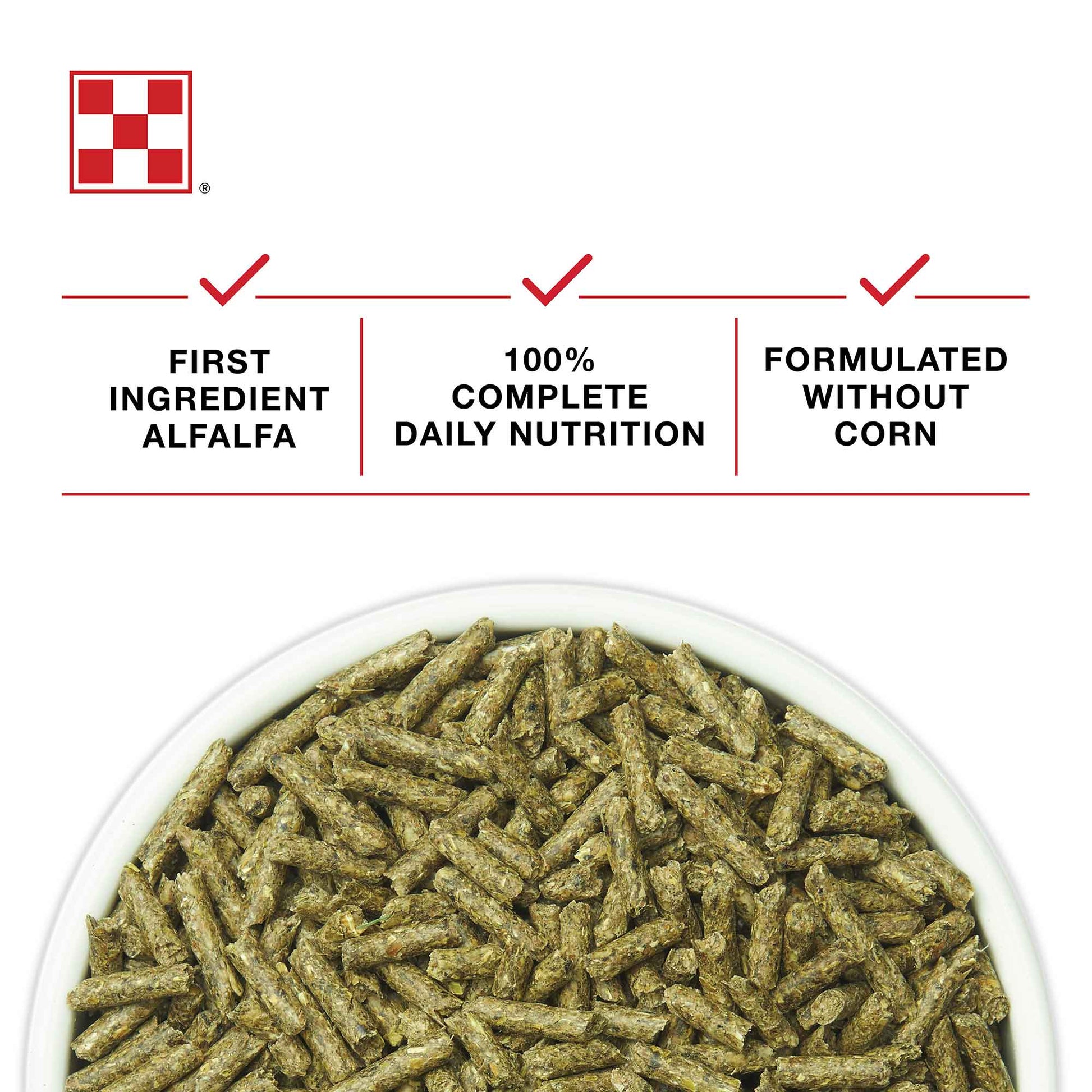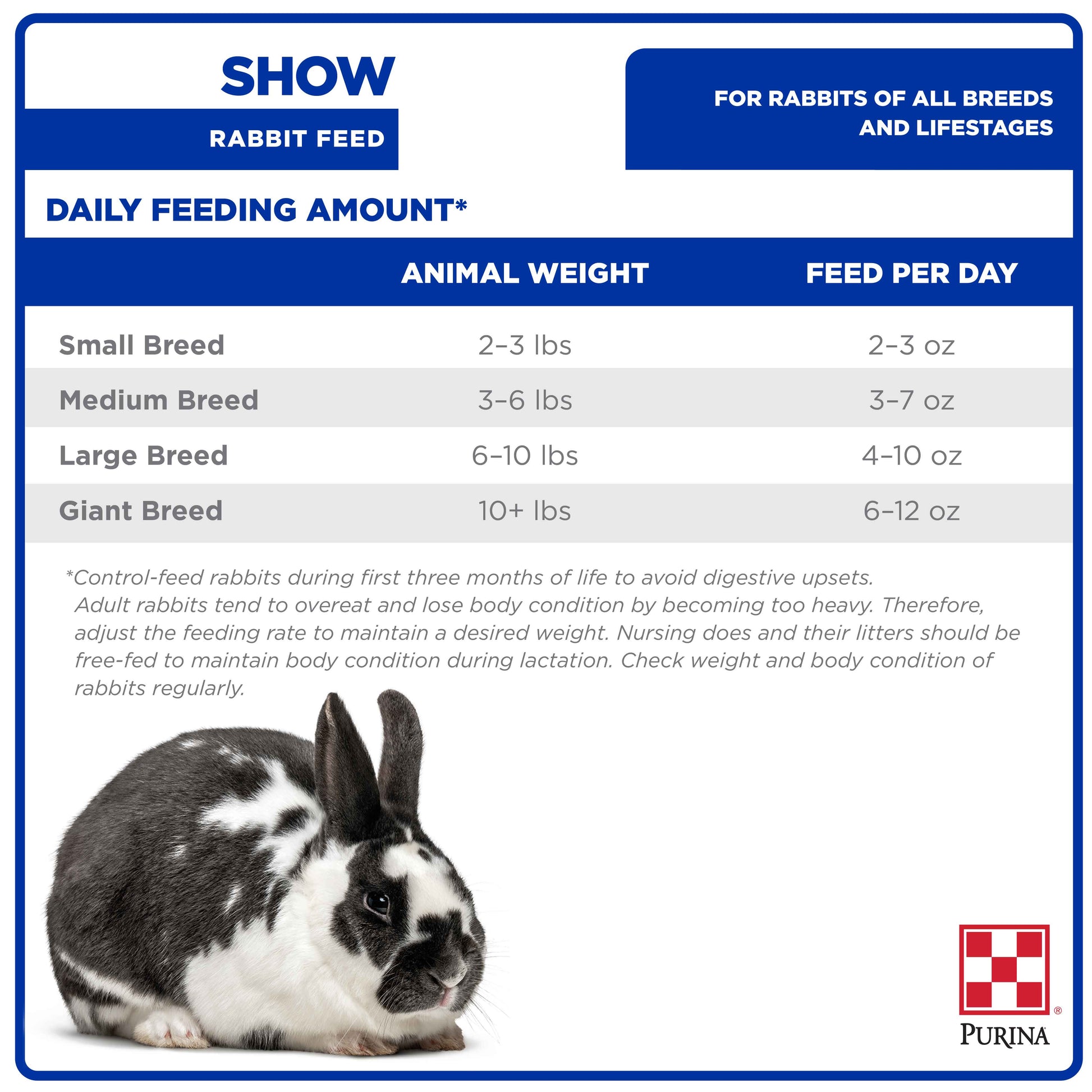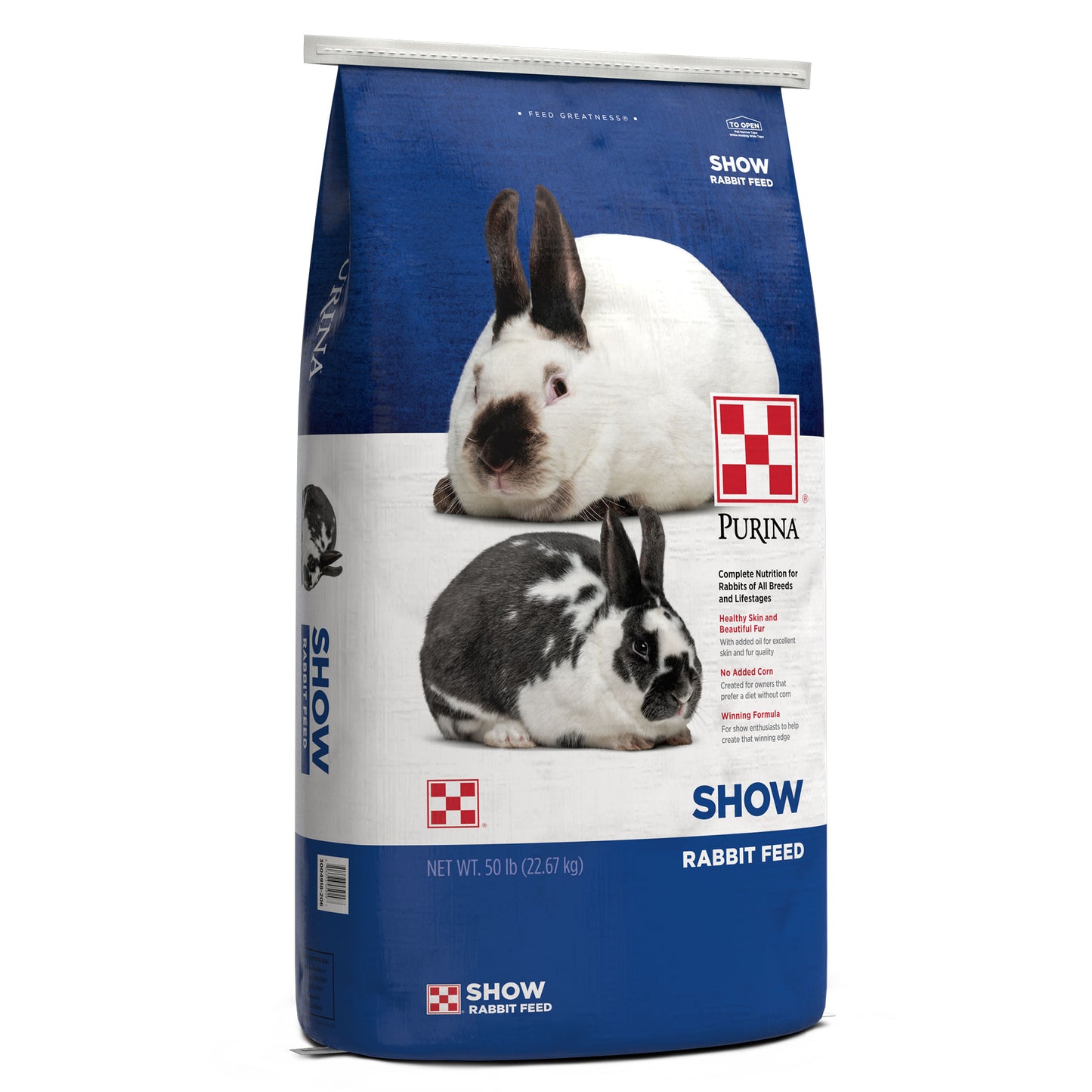
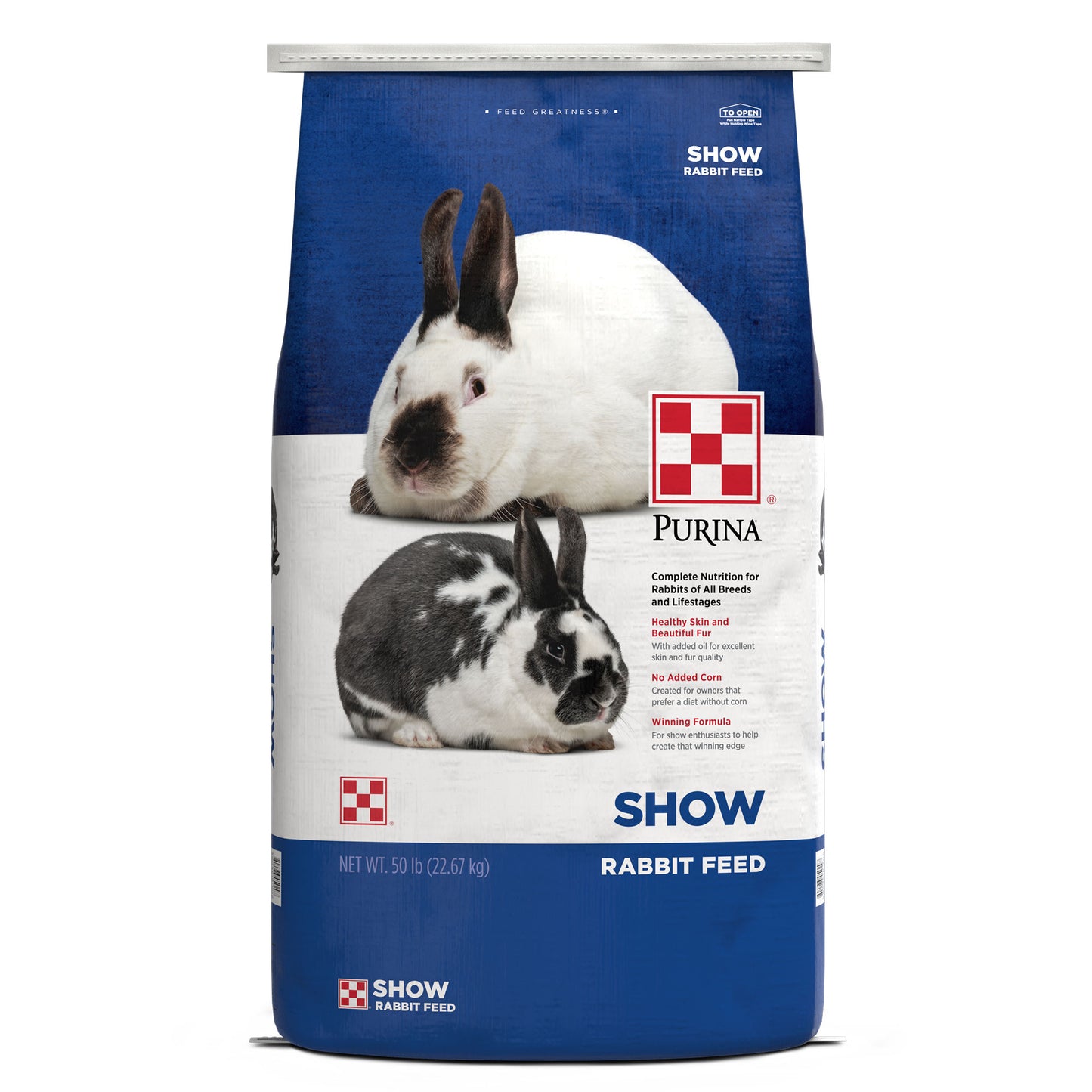
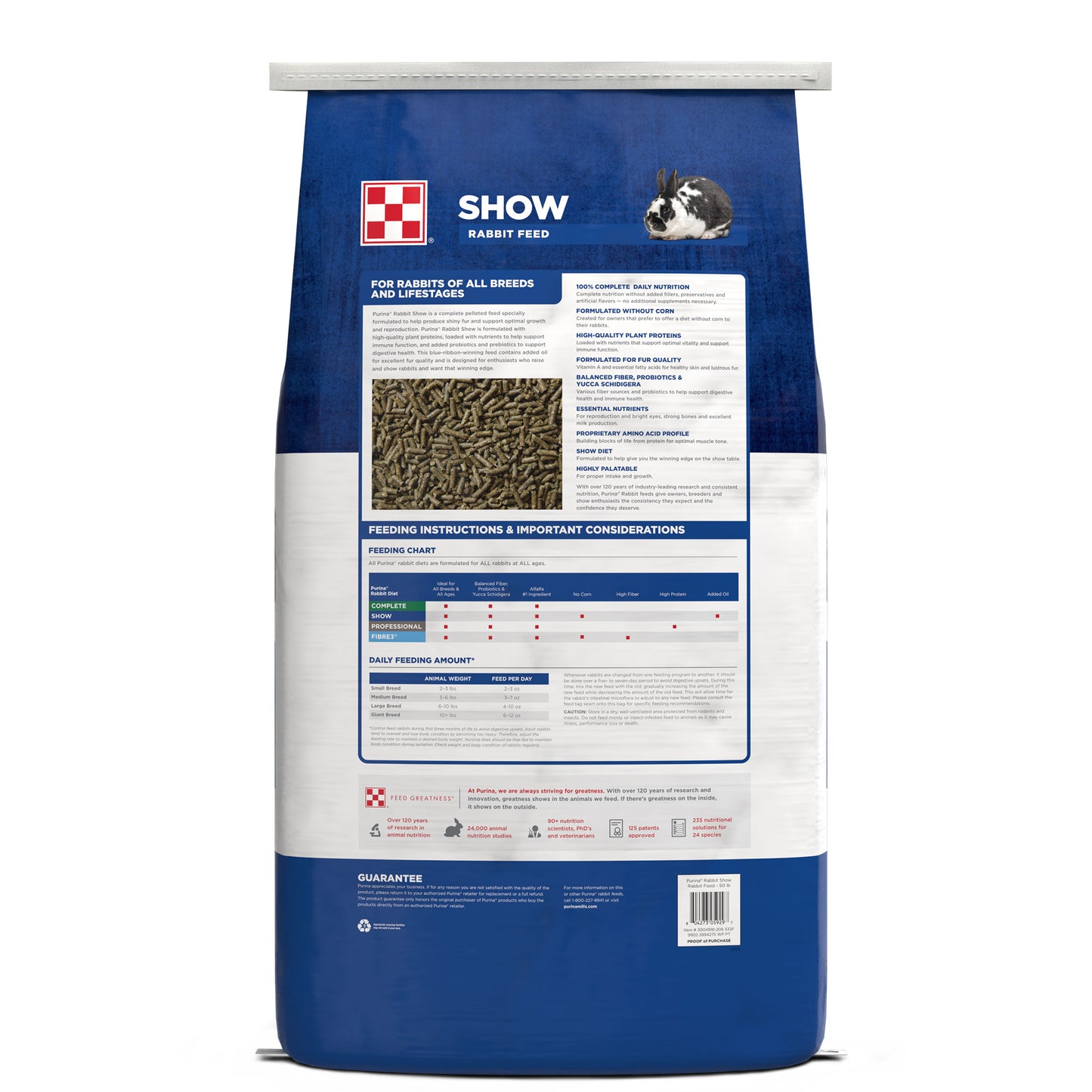
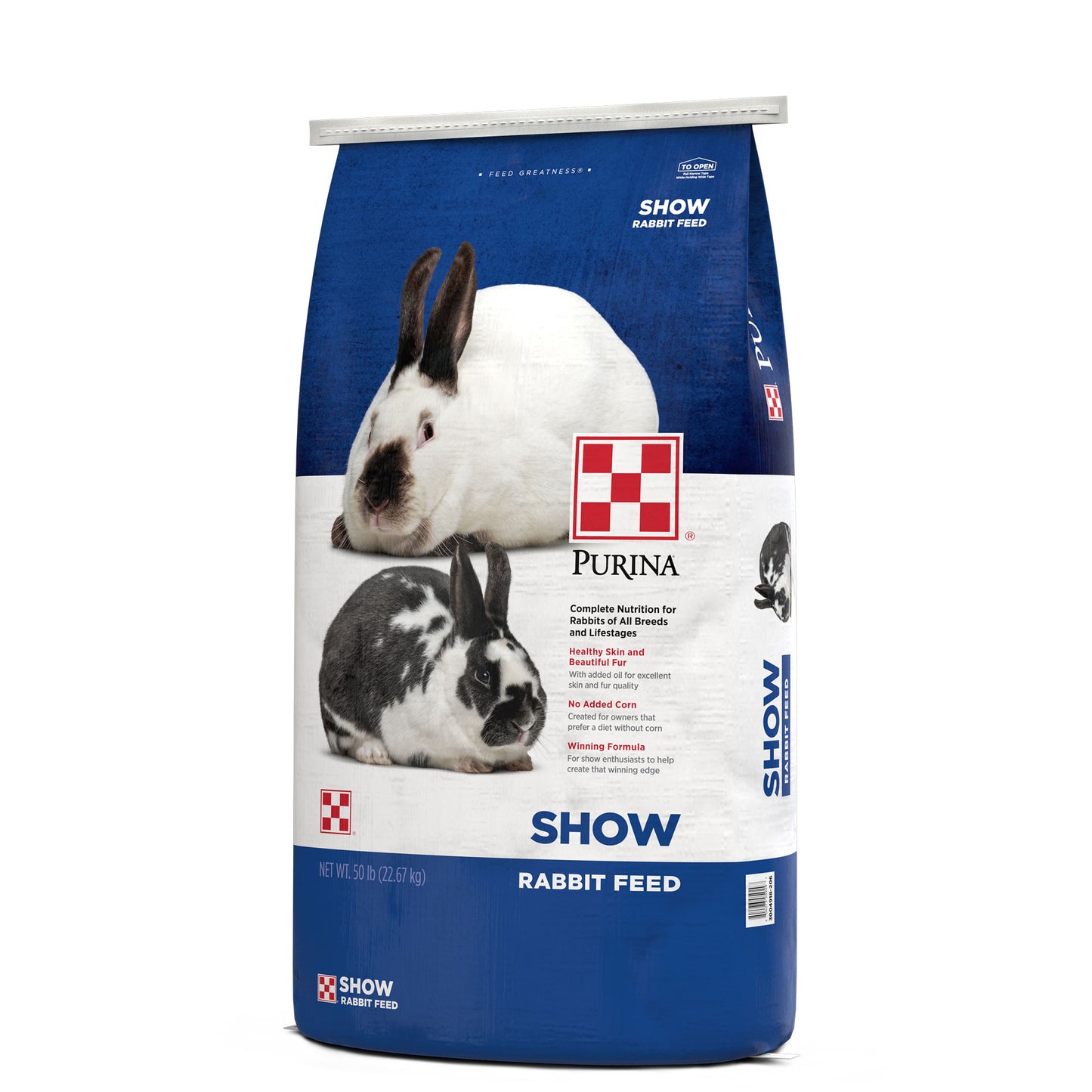
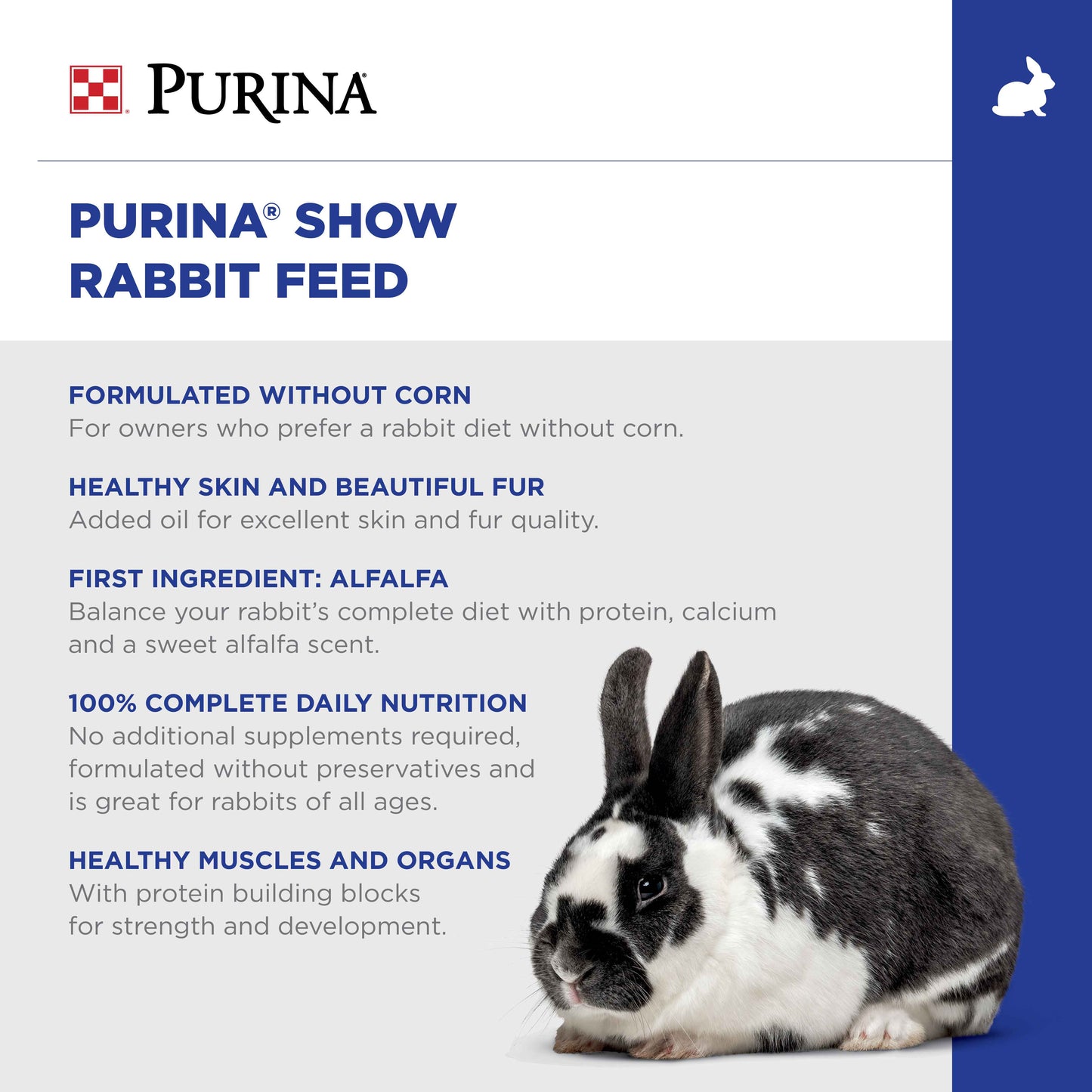
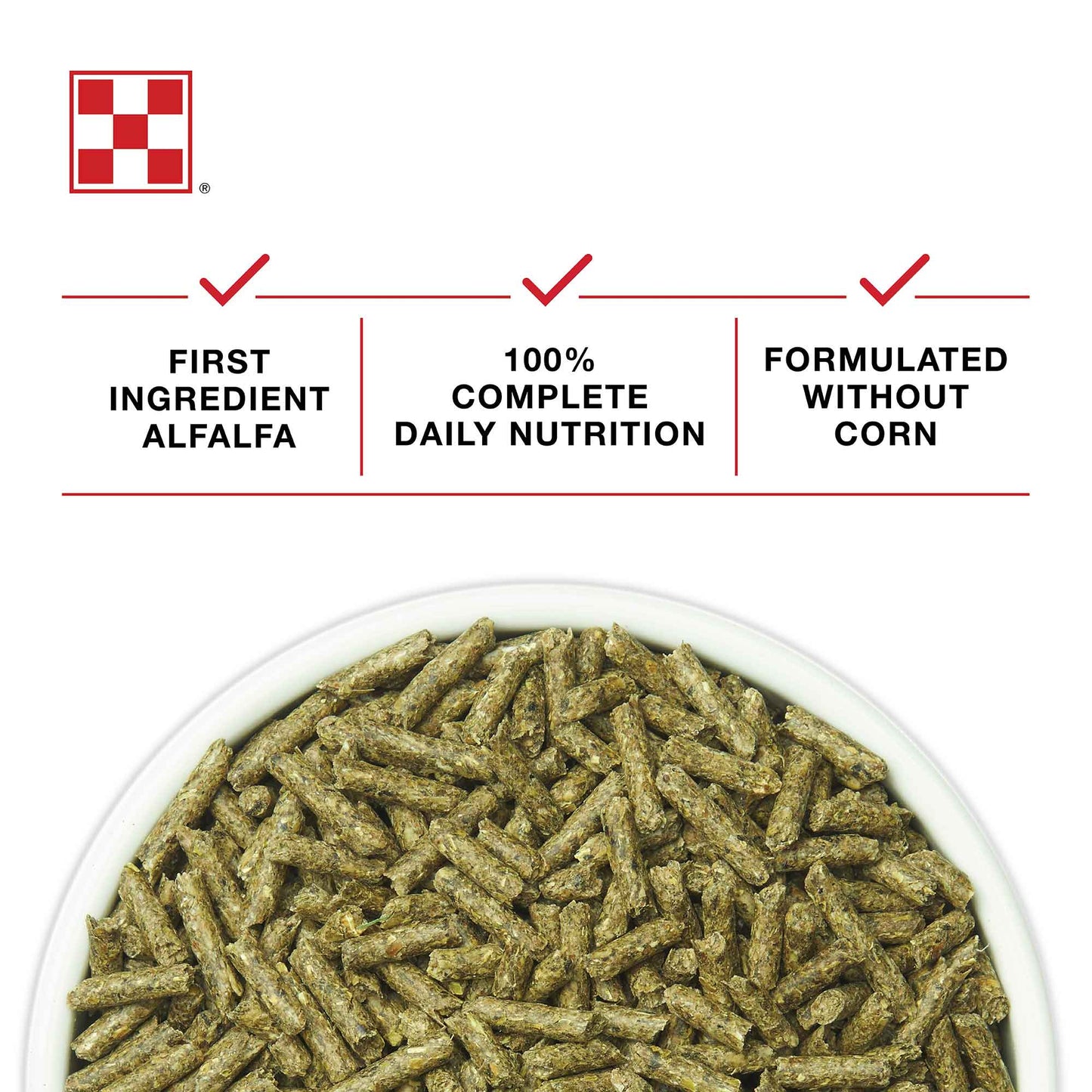
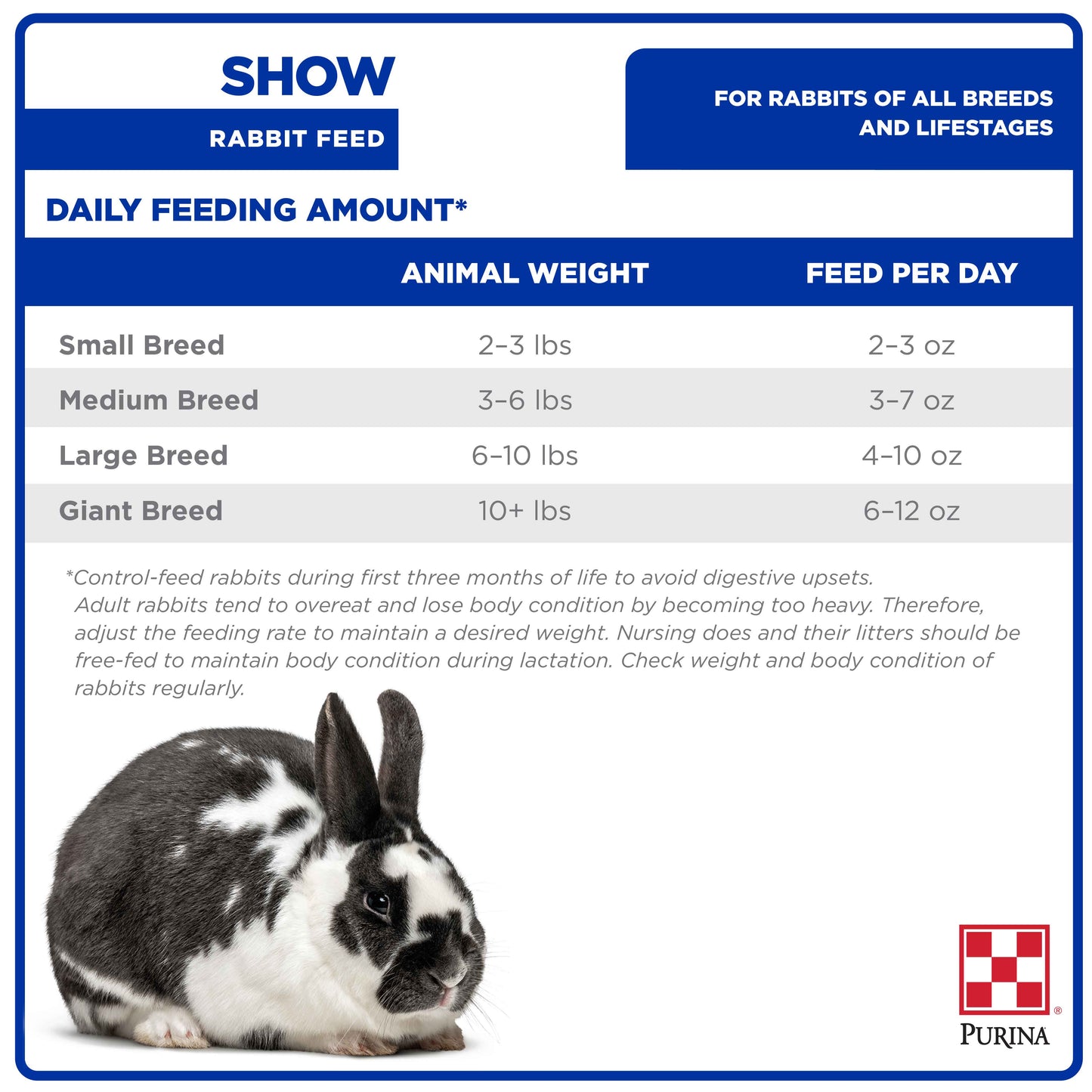
| Nutrient | Min / Max | Amount |
|---|---|---|
| Crude Protein | MIN | 16.00% |
| Crude Fat | MIN | 3.50% |
| Crude Fiber | MAX | 23.00% |
| Calcium (Ca) | MIN | 0.50% |
| Calcium (Ca) | MAX | 1.00% |
| Phosphorus (P) | MIN | 0.40% |
| Salt (NaCl) | MIN | 0.25% |
| Salt (NaCl) | MAX | 0.75% |
| Vitamin A | MIN | 4800 IU/LB |
Show rabbits should be limit fed approximately 1/2 ounce per pound of body weight per day to maintain lustrous fur and maintain body condition. Feeding rate may need to be adjusted for desired body condition. Nursing does and their litters should be free fed. Lactating does will consume 1 to 3 ounces per pound of body weight per day. Gradually increase the amount fed from the time of kindling so at the time the litter is one week old the doe is consuming all of the feed she will eat. This formula will support an average of 5 breeding cycles annually, while encouraging consistent reproduction of does and healthy, rapid growth of bunnies. Mature rabbits should be limit fed approximately 2 to 5 ounces per day to maintain a trim and fit condition.
Caution:
Store in a dry, well-ventilated area protected from rodents and insects. Do not feed moldy or insect-infested feed to animals as it may cause illness, performance loss or death. USE ONLY AS DIRECTED
Management Practices:
Follow these management practices:
- Mature and elderly rabbits may benefit from supplements low in calcium.
- Growing, gestating, and lactating rabbits may benefit from supplements high in calcium and protein.
- Rabbits maintained in breeding colonies with high breeding rates may benefit from supplements high in energy.
- Provide plenty of fresh, clean water at all times.
- Young rabbits will begin to consume feed when they come out of the nest box at approximately three weeks of age.
- If weight control is necessary, limit feed this product at the rate of 0.5 ounces per pound of body weight per day.
- Feed requirements of rabbits will vary depending on their body weight, environmental temperatures, type of housing, and stage of production (maintenance, gestation, lactation, growth).
- A feeding program is only as effective as the management practices followed.
It is always good practice to wash hands thoroughly after feeding and/or handling animals. Contents of bag are not for human consumption. Contains a source of live (viable) naturally occurring microorganisms.
| Nutrient | Min / Max | Amount |
|---|---|---|
| Crude Protein | MIN | 16.00% |
| Crude Fat | MIN | 3.50% |
| Crude Fiber | MAX | 23.00% |
| Calcium (Ca) | MIN | 0.50% |
| Calcium (Ca) | MAX | 1.00% |
| Phosphorus (P) | MIN | 0.40% |
| Salt (NaCl) | MIN | 0.25% |
| Salt (NaCl) | MAX | 0.75% |
| Vitamin A | MIN | 4800 IU/LB |
Show rabbits should be limit fed approximately 1/2 ounce per pound of body weight per day to maintain lustrous fur and maintain body condition. Feeding rate may need to be adjusted for desired body condition. Nursing does and their litters should be free fed. Lactating does will consume 1 to 3 ounces per pound of body weight per day. Gradually increase the amount fed from the time of kindling so at the time the litter is one week old the doe is consuming all of the feed she will eat. This formula will support an average of 5 breeding cycles annually, while encouraging consistent reproduction of does and healthy, rapid growth of bunnies. Mature rabbits should be limit fed approximately 2 to 5 ounces per day to maintain a trim and fit condition.
Caution:
Store in a dry, well-ventilated area protected from rodents and insects. Do not feed moldy or insect-infested feed to animals as it may cause illness, performance loss or death. USE ONLY AS DIRECTED
Management Practices:
Follow these management practices:
- Mature and elderly rabbits may benefit from supplements low in calcium.
- Growing, gestating, and lactating rabbits may benefit from supplements high in calcium and protein.
- Rabbits maintained in breeding colonies with high breeding rates may benefit from supplements high in energy.
- Provide plenty of fresh, clean water at all times.
- Young rabbits will begin to consume feed when they come out of the nest box at approximately three weeks of age.
- If weight control is necessary, limit feed this product at the rate of 0.5 ounces per pound of body weight per day.
- Feed requirements of rabbits will vary depending on their body weight, environmental temperatures, type of housing, and stage of production (maintenance, gestation, lactation, growth).
- A feeding program is only as effective as the management practices followed.
It is always good practice to wash hands thoroughly after feeding and/or handling animals. Contents of bag are not for human consumption. Contains a source of live (viable) naturally occurring microorganisms.
Reviews
You May Also Like

For the widest selection of Purina products – along with personal service and know-how – check with your local retailer.

